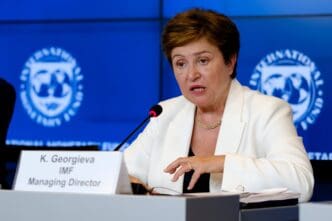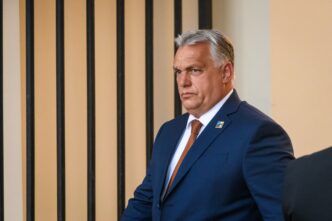Executive Summary
The Story So Far
Why This Matters
Who Thinks What?
The global economy has demonstrated greater resilience than anticipated despite numerous shocks, according to Kristalina Georgieva, Managing Director of the International Monetary Fund. Speaking at the Milken Institute in Washington, D.C., on Wednesday, Georgieva forecast only a slight slowdown in global growth for this year and 2026. She noted a softening in the U.S. economy, which nevertheless averted a recession widely feared by experts just six months prior, while warning of exceptionally high uncertainty and a surging demand for gold as a safe-haven asset.
Global Economic Outlook
Georgieva presented a preview of the IMF’s upcoming World Economic Outlook, indicating that global growth is expected to slow only slightly. This resilience is attributed to improved policies, a more adaptable private sector, less severe import tariffs than initially feared, and supportive financial conditions.
In July, the IMF had revised its global growth forecast upwards, projecting 3.0% for 2025 and 3.1% for 2026. The full updated outlook is scheduled for release next Tuesday during the annual IMF-World Bank meetings in Washington, which occur amid significant global shifts, including trade policies under President Trump and the rapid advancements in artificial intelligence.
Challenges and Risks Ahead
Despite the current resilience, Georgieva characterized the world economy as “better than feared, but worse than needed.” She highlighted that the IMF forecasts global growth to hover around 3% over the medium term, a figure significantly below the 3.7% projected before the COVID-19 pandemic. This persistent gap indicates underlying economic challenges.
The IMF chief pointed to deep undercurrents of marginalization, discontent, and hardship worldwide, alongside a range of risks facing the global economy. Uncertainty, in particular, is at exceptionally high levels and continues to climb, prompting Georgieva to advise countries to “buckle up” as “uncertainty is the new normal and it is here to stay.”
Market Indicators and Tariff Impacts
A notable indicator of market apprehension is the surging demand for gold, a traditional safe-haven asset for investors. Georgieva stated that monetary gold holdings now exceed 20% of the world’s official reserves, with gold prices recently hitting a record high amid a U.S. government shutdown and expectations for a Federal Reserve rate cut.
Regarding trade, the U.S. tariff shock has been less severe than initially announced, with the U.S. trade-weighted tariff rate currently around 17.5%, down from 23% in April. Most countries have refrained from retaliatory tariffs. However, Georgieva cautioned that U.S. tariff rates remain subject to change, and inflation could rise if companies pass on more tariff costs or if a surge of goods diverted from the U.S. triggers further tariff hikes elsewhere.
Financial market valuations are also approaching levels last seen during the internet-related bullishness of 25 years ago. Georgieva warned that an abrupt shift in sentiment, similar to the dot-com crash of March 2000, could significantly impede world growth, particularly impacting developing countries.
Policy Recommendations for Sustainable Growth
Georgieva urged countries to implement measures to durably boost growth, emphasizing the need to enhance private-sector productivity, consolidate fiscal spending, reduce debt, and address excessive current account imbalances. These steps are crucial for rebuilding economic buffers in preparation for future crises.
She specifically highlighted that global public debt is projected to surpass 100% of GDP by 2029. Key policy enablers include fostering competition, ensuring free-market-friendly property rights, upholding the rule of law, establishing strong financial sector oversight, and promoting accountable institutions.
Regional Policy Directives
The IMF Managing Director offered tailored recommendations for various regions. For Asia, she suggested deepening trade and implementing reforms to strengthen the service sector, noting that lowering non-tariff barriers and boosting regional integration could increase gross domestic product by 1.8% in the long run.
In Sub-Saharan Africa, business-friendly reforms have the potential to boost the real GDP per capita of the median African country by over 10%. Europe was advised to press forward with building a single market to help it match the dynamism of the U.S. private sector.
For the United States, Georgieva recommended sustained action to lower federal debt, which is on track to exceed its all-time high from after World War Two, and to boost household saving, such as through favorable treatment of retirement savings. Finally, China was urged to increase fiscal spending on social safety nets and property sector clean-up, while simultaneously reducing expenditures on industrial policy initiatives.








